Budapest has a summer spot that even most locals don’t know about, yet it’s absolutely fascinating: the Chinatown Night Market, where you can try genuine Far Eastern street food in a truly local atmosphere. We’ve visited several times over the years, so I figured I’d share the essential details – maybe you’ll also want to take a trip to Asia right in the middle of Europe.
What Is Budapest’s Chinatown Night Market?
Officially dubbed the “Chinatown Terrace,” this event has been running for over 10 years in the city. It typically opens when the good weather arrives in early May and stays open daily (yes, even on holidays and Hungarian national holidays) from 5 PM to 11 PM through mid-September in Budapest’s 9th district, the heart of the local Chinese diaspora. This means it’s a bit off the beaten tourist path, but it’s absolutely worth carving out time to visit.
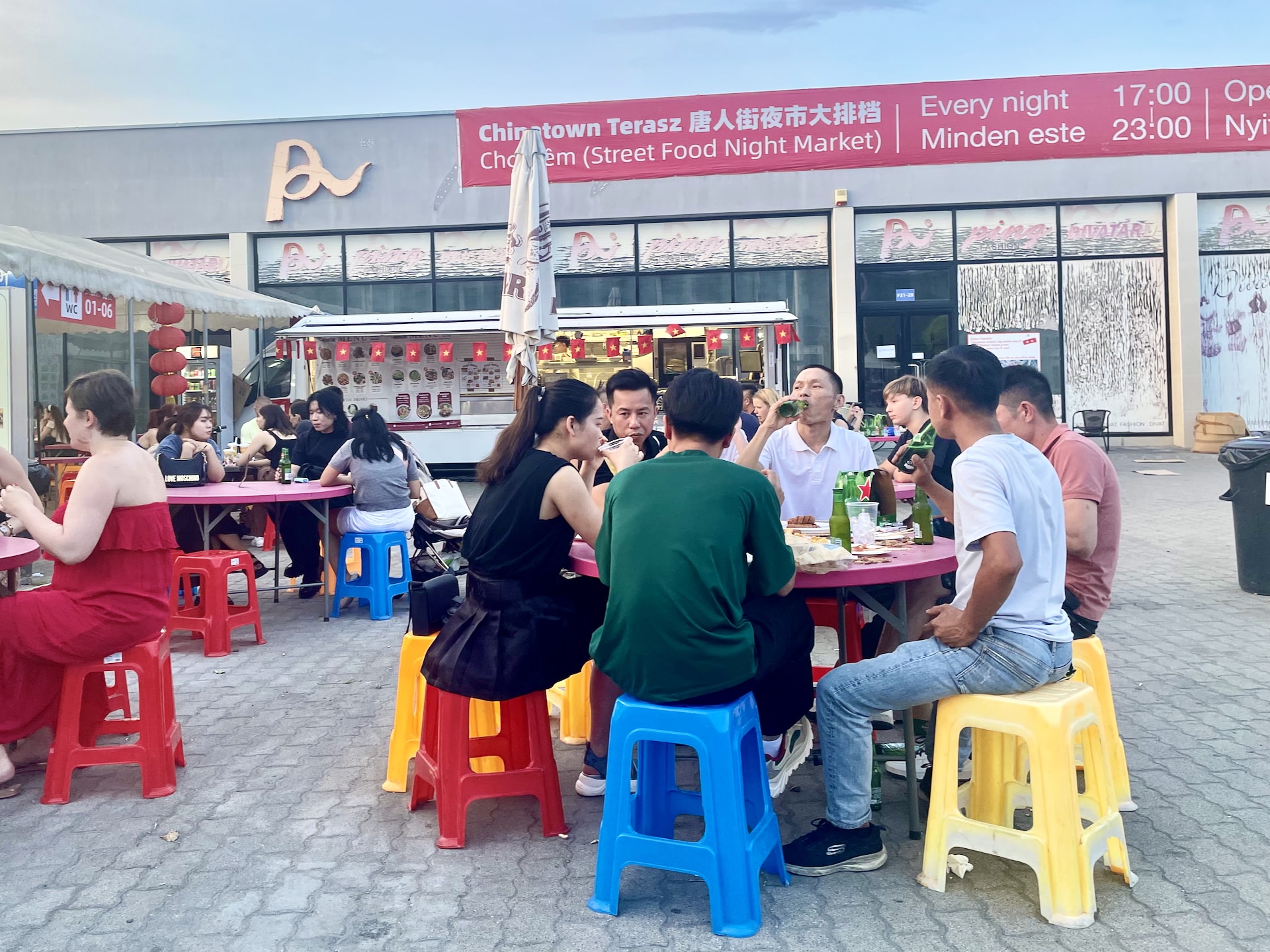
How to Get to the Chinese Night Market in Budapest
You can approach from several directions if you’re coming from downtown. Driving is relatively straightforward with plenty of (free!) parking spots, and taxis remain another option. But for those who prefer the budget-friendly public transportation (and why wouldn’t you, since Budapest’s is exceptionally good), surprisingly, the train might be your easiest bet. From Nyugati Railway Station, trains depart every 10-15 minutes on weekdays, stopping at “Kőbánya alsó” station. The journey takes about 10 minutes, and a one-way ticket costs 400 HUF (~$1.1 USD), though you can also use your Budapest public transport pass for trains within city limits. From the station, it’s roughly a 10-minute walk to the night market.
Should trains not appeal to you, nearby stops include trams 3, 28, and 62, or buses 9, 95, and 195 – plenty of options exist. The simplest approach is using the BudapestGO app to plan a route from your current location by searching for “Chinatown Night Market.” For the return trip, stay alert and plan ahead, especially if you’re taking the train, since services become less frequent around 10 PM.
If you can swing it, I’d recommend visiting on weekdays rather than weekends. The weekend crowds can get intense, leading to longer lines and a generally less comfortable experience overall
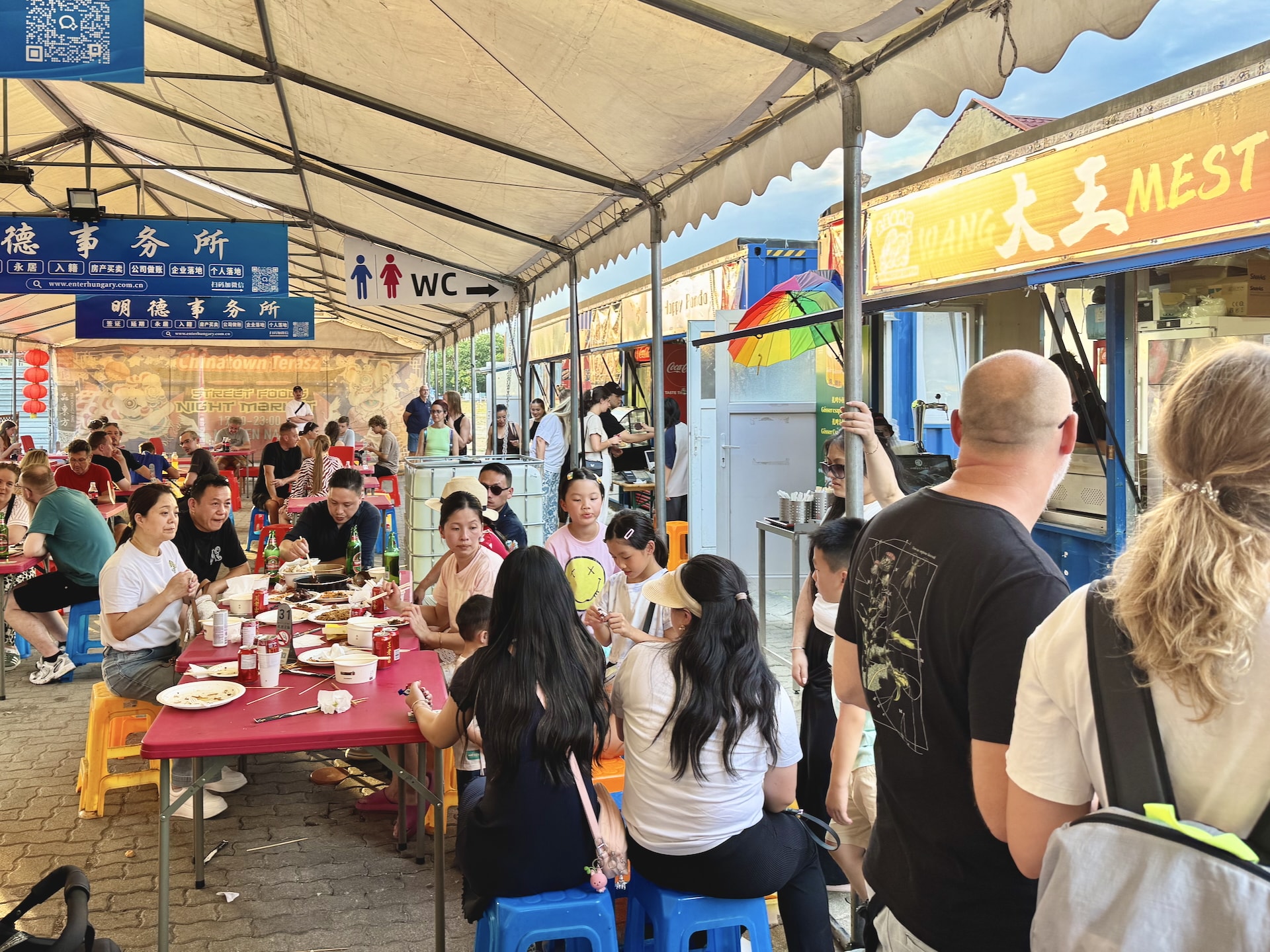
Finding the “Secret” Entrance
Even after multiple visits, I still find the entrance challenging to spot, and I’d swear they move it every year. Plus, I’m fairly certain I’ve never used the official entrance, but theoretically, one entrance opens from Jegenye Street and another from Mázsa Street. Coming from the train station, the easiest landmark to spot from a distance is the Wanhao restaurant building. Once you navigate past the fence/wall and spot the panda fountain, you’ll know you’re in the right place.
Download the BudapestGO app before your visit and save the night market location as a favorite. This makes planning your return journey much easier, especially after a few Tsingtao beers!
Inside the Night Market: Layout and Atmosphere
The venue itself features a large tent (in 2025, it’s L-shaped – I don’t think it was like this before) surrounded by 10-12 food stalls selling food and drinks, plus a few food trucks outside the tent (interestingly, these are almost all Vietnamese). Under the tent, you’ll find about 100 tables with plastic stools that almost capture that genuine Southeast Asian vibe, although thankfully (or unfortunately?) they’re taller than what you’d find in Asia, so you don’t have to hunch over as much.
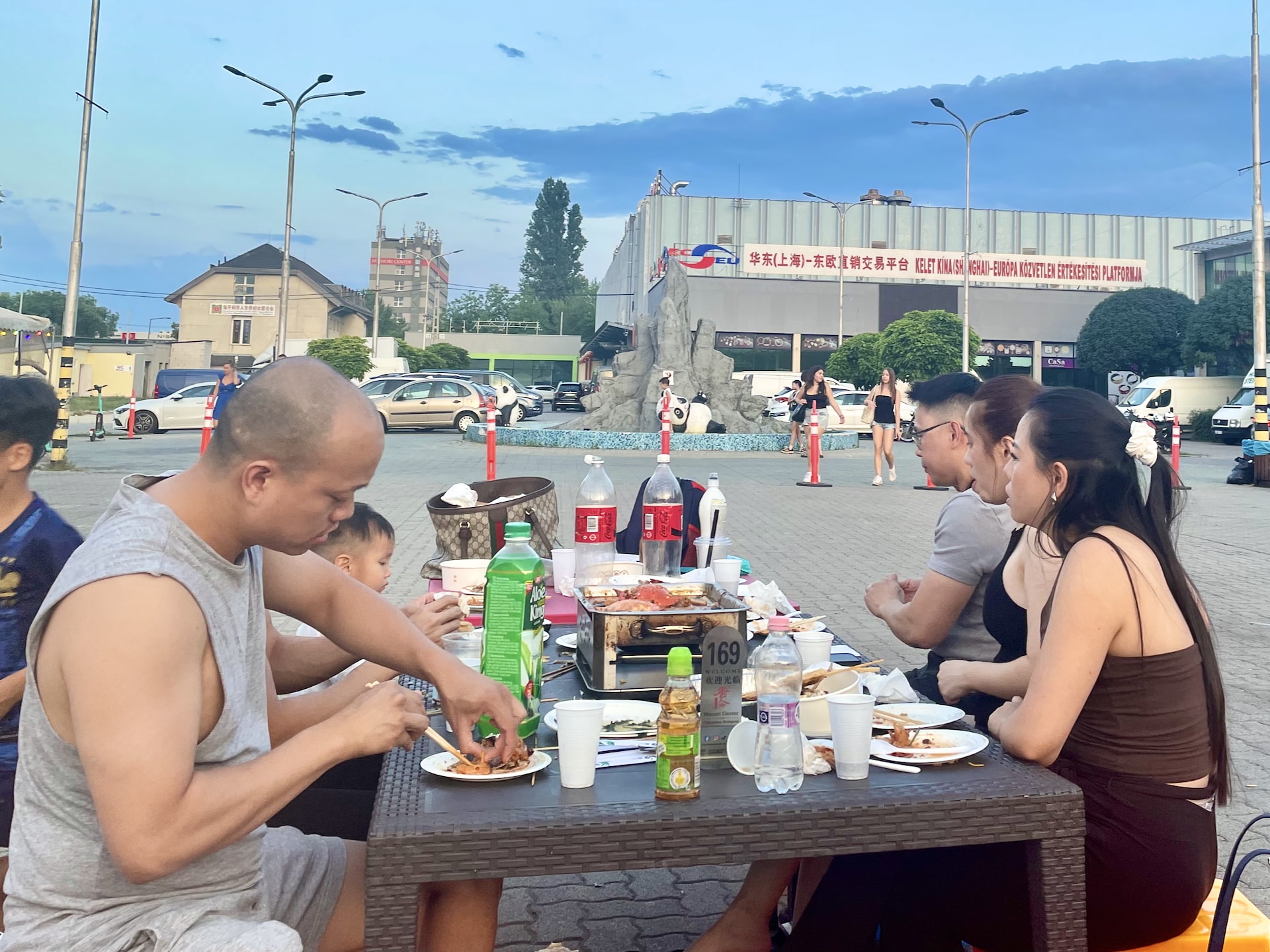
The tent is great if it’s raining, but when it’s really hot, the air can get stagnant underneath, so you might want to hunt for a table along the edges. Some spots exist outside the tent as well, which can be nice once the sun goes down. During our last visit, we had 35°C (95°F) heat combined with high humidity, so sweating on those stools almost felt like we were genuinely in Bangkok or Saigon.
Authentic Asian Street Food: What to Eat at Budapest’s Chinese Night Market
But let’s get to the main event: the food! The selection is diverse, featuring restaurants that also have permanent locations in Chinatown. The offerings include everything from modern, Instagram-worthy dishes (think bubble waffles and colorful boba teas) to truly traditional Chinese cuisine.
Must-Try Dishes and Local Favorites
When we go as a group, we usually claim a table, take turns getting food, then share everything – maximizing the flavors we can try without completely bursting at the seams. Well, that still happens, just a bit later. One thing we never skip is the Chinese “pancake,” or bing, which can be stuffed with countless fillings. Sharing this particular dish can be tricky – last time they hilariously refused to cut it into three pieces, only two. This visit, spotting the Vietnamese stall, we also tried bún chả, and naturally we couldn’t miss the familiar baozi, the filled Chinese steamed buns.
For Adventurous Eaters: Exotic Foods to Try
But you don’t have to stick with seemingly safe flavors. For those feeling adventurous (which for us usually kicks in after several Tsingtaos), more extreme-looking dishes await. Last year, Peter went for the pig ear salad, and on this visit, after our usual beer count plus two, we signed up for grilled silkworms on a stick, which were quite tasty aside from a slight aftertaste. Also on offer: duck heads, duck intestines, chicken feet, and chicken cartilage, plus some particularly mystical-sounding items like “braised gluten” and “large intestine” – maybe we’ll risk those next time.
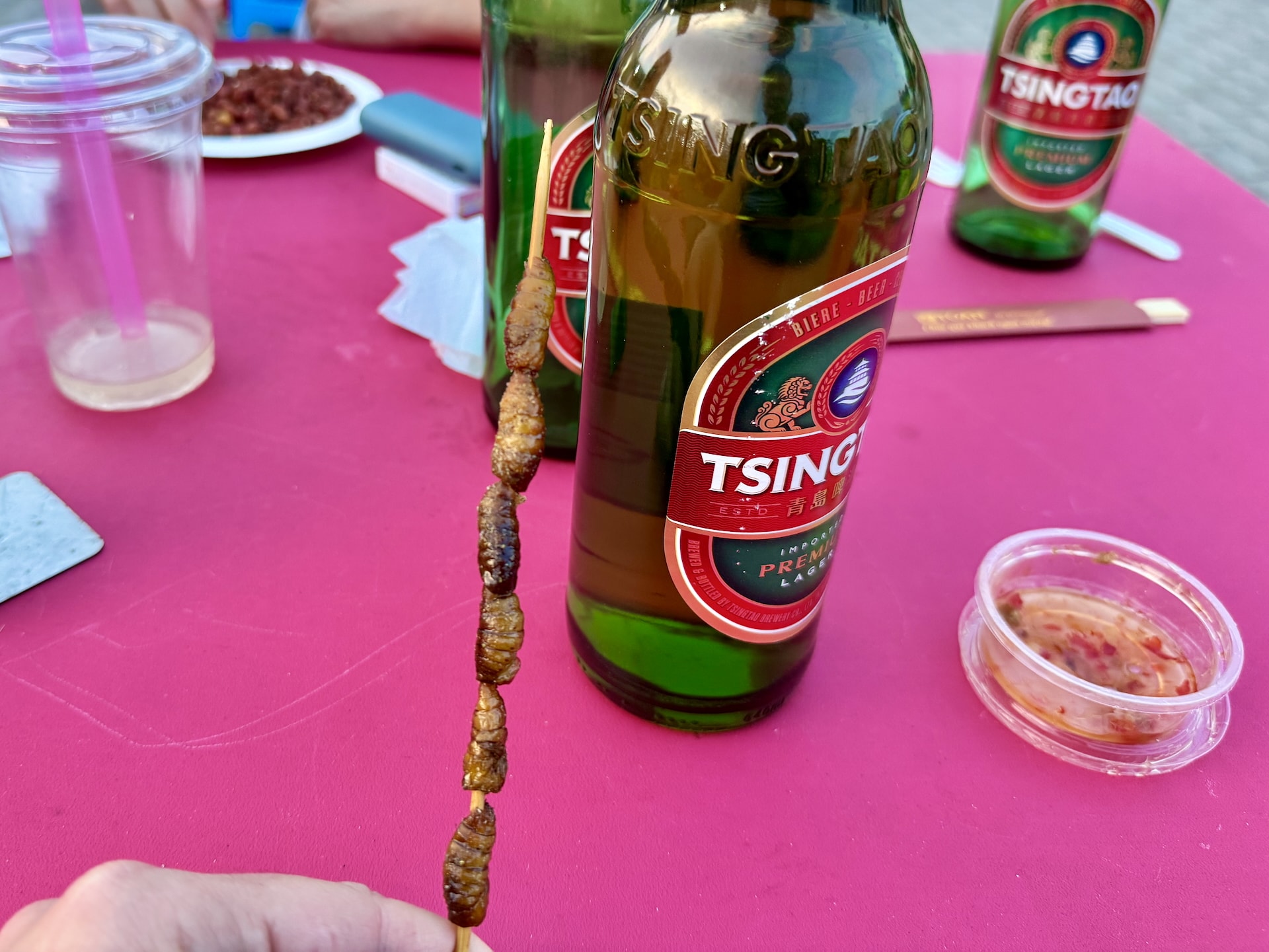
From what I’ve observed, the locals (meaning the Chinatown locals) seem to favor different skewers, along with all kinds of seafood dishes, and naturally, hotpot, which is a real communal experience. (We’ve decided to try one next time, hopefully with fewer crabs and octopi than what we’ve seen others ordering.)
For drinks, you’ll naturally find bubble tea in countless flavors, available in regular or dairy-free versions, but Andrea also discovered Vietnamese sugarcane drink (mía đá), though here they press it with a machine rather than by hand like on Hanoi’s streets. If you’re a beer drinker, Tsingtao is available everywhere in small bottles (11 fl oz/0.33L), and some places also have the larger size (21.6 fl oz/0.64L). Last year we stumbled upon various Chinese liquors, but this year we only saw advertisements for them – though we weren’t exactly searching too hard…
Desserts feature the usual Asian lineup: multiple types of mochis, sponge cakes, rainbow cake, and the aforementioned bubble waffle. We don’t usually eat sweets however – by the time we’d get to dessert, we’ve typically gorged ourselves on main dishes.
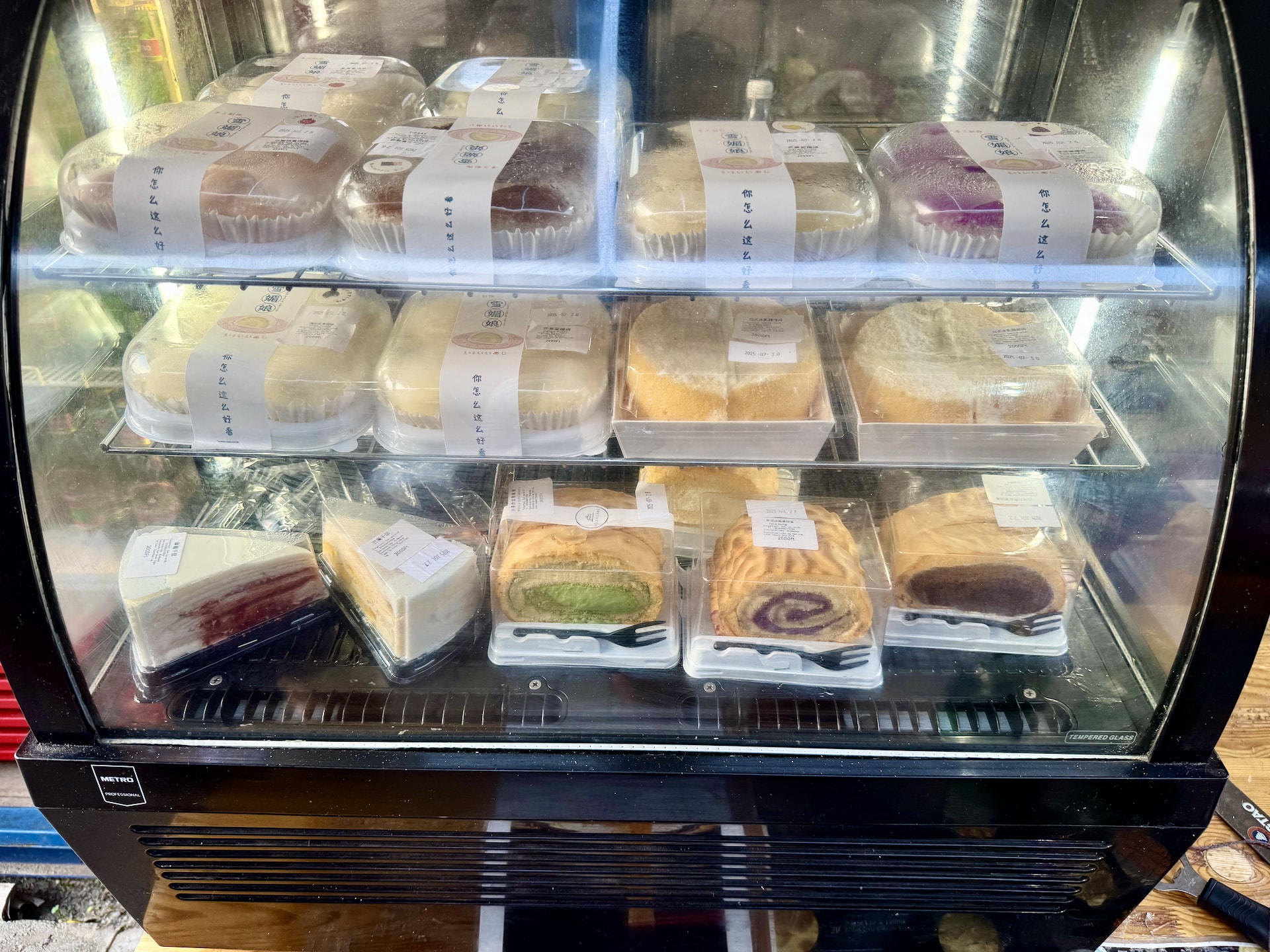
Different restaurants have different systems for delivering food and drinks. Some ask for your table number (you can read this from the metal signs on the tables, which is why it’s worth claiming a table before exploring), then bring the food when it’s ready. Others give you a standard buzzer that vibrates when your order’s ready, so you go back and collect it. The simplest system is when you’re buying ready-made items – they just hand them straight to you. The majority of stalls have chopsticks and napkins on hand, plus spoons and forks for those who find chopsticks challenging.
Budapest Chinese Night Market Prices 2025
As for prices, I wouldn’t exactly call the Chinatown Night Market cheap, but it’s not outrageously expensive either. A larger main dish (say a bún chả or a well-loaded bing) runs around 3,000-4,000 HUF (~$8.5-11.5 USD), while smaller skewers go for 1,000-2,000 HUF (~$3-6 USD) – you’ll probably want several of these. A small Tsingtao beer costs 1,000 HUF (~$3 USD) (same price as Heineken), while the larger one is 1,800 HUF (~$5 USD). During our last visit, we spent about 10,000 HUF (~$28.6 USD) per person, albeit we did consume a bit more beer than usual before and after the silkworms. I didn’t encounter any stall that didn’t accept card payments, and yes, restrooms are present, clearly marked with signs.
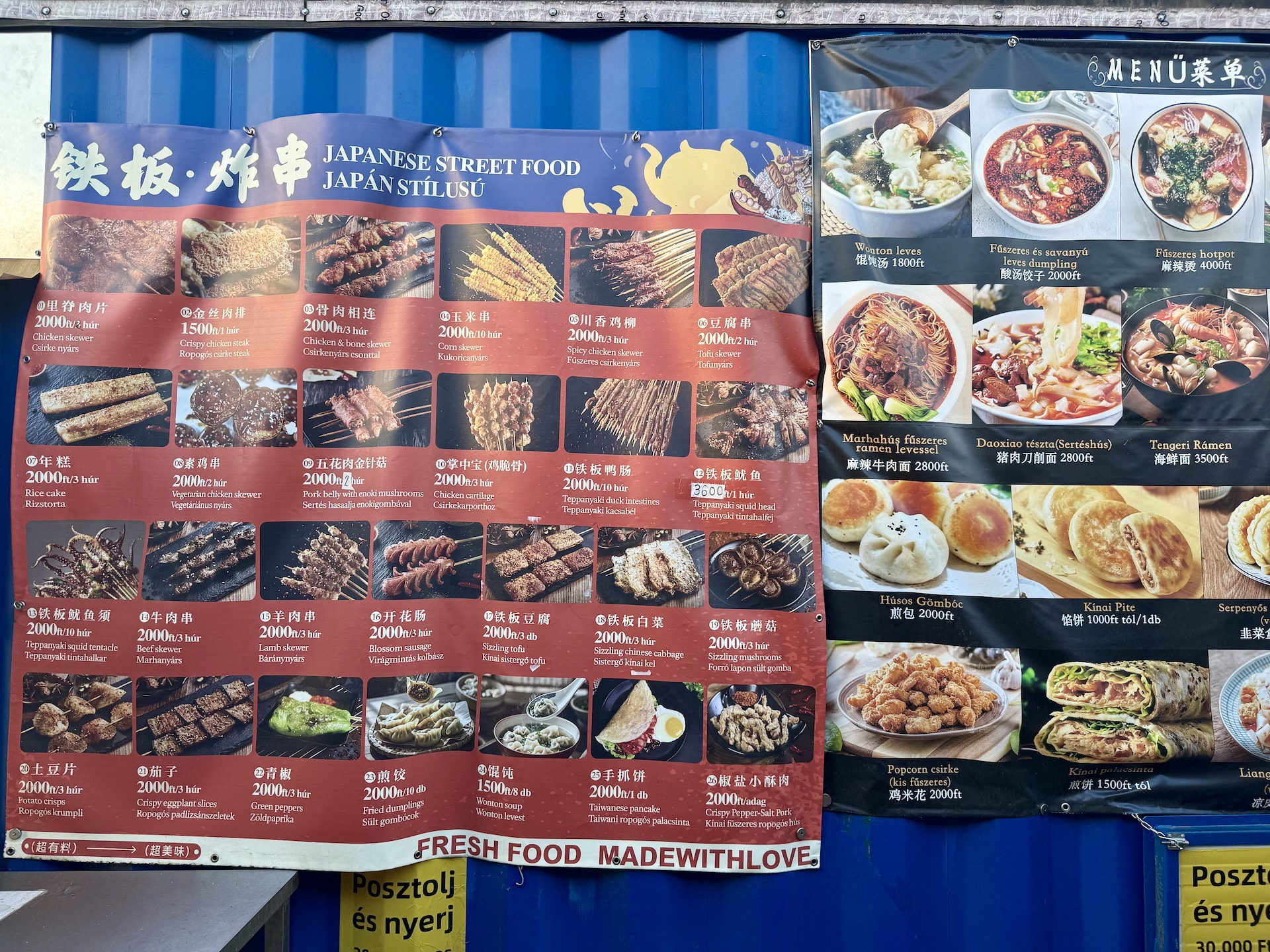
Why This Hidden Gem Is Worth Finding
So if you find yourself in Budapest and want to venture off the well-worn tourist trail, I wholeheartedly recommend the Chinatown Night Market. The food is genuinely traditional Asian fare, the atmosphere is fantastic (during our visit the Vietnamese vendors were really going all out with Vietnamese disco and their signature flashing speakers), and while it’s certainly aimed at tourists, you’ll still get a glimpse into the daily life of the local Asian community. For example, for the first time in 2025, I started translating and reading the different Chinese-language advertisements – these were clearly aimed at the Chinese audience, advertising things like investment opportunities for Hungarian residency permits.

